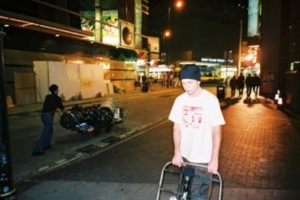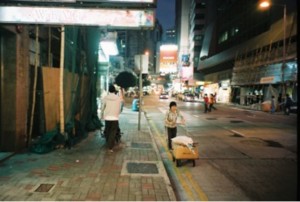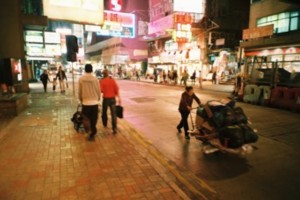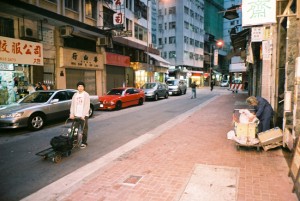Presented as a field recording, Ecological Reduction, was performed as a sound walk around the Sheung Wan neighbourhood in Hong Kong.
Paiva built an instrument out of one of the pushcarts commonly used to haul freight on the streets of Hong Kong; with the aid of both contact and stereo microphones, a physically strenuous walk plays the role of a needle on an oversized record of improvisation. While the two contact microphones record the pushcart’s sounds, a stereo microphone records the surrounding sounds.
The cart’s physical properties and conduction, is used as an embed into the soundscape. An instrument that can be played by changing the driving, the velocity and the path.
While the homeless drift through the streets of Sheung Wan looking for garbage that can be collected and recycled, the performer searches for sound events, whereas by approaching certain situations, or by looking for paths with more friction. Ecological Reduction addresses drifting as a composition method, it solidifies the presence of the performer that records, not excluding this from the soundscape. While the listening experience tends to focus on the structure of the piece, the sound sources remain clear, the result is an ambiguous mix of field recordings and environmental information that is reduced to an abstract sound form composed by frequencies and rhythms.
Ecological Reduction confronts the reductive and ecological approaches to listening, recognition and qualitative appreciation of sonic sources are inseparable .



